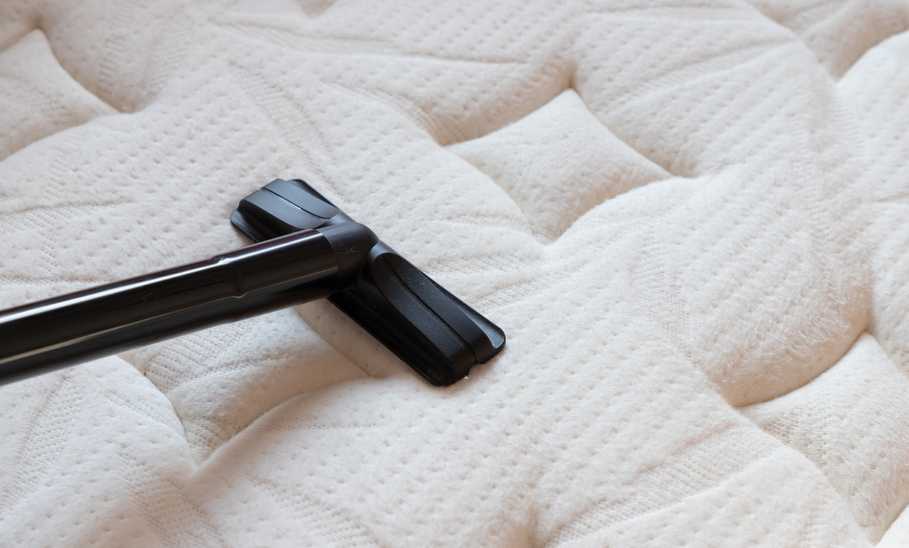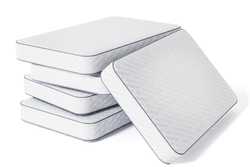How to Clean a Mattress: A Step-by-Step Guide

Our evaluations and opinions are not influenced by our advertising relationships, but we may earn a commission from our partners’ links. This content is created by TIME Stamped, under TIME’s direction and produced in accordance with TIME’s editorial guidelines and overseen by TIME’s editorial staff. Learn more about it.
Your mattress is the workhorse of the bedroom, especially if slept in nightly. While bedding needs to be washed regularly, a mattress should be deep cleaned at least twice a year, according to experts. Why? Because mattresses can trap odors, fluids, dust mites, and other unpleasant things over time that can impact your health. Overall, a dirty mattress is uncomfortable for everyone, but mattresses are expensive—even if you purchase one during the best time to buy a mattress, like during a holiday sale.
While you can’t just toss a mattress into a washing machine with your sheets, a deep clean doesn’t have to be difficult. Follow these steps to clean most types of mattresses.
You’ll need baking soda, a vacuum cleaner (although your current vacuum works just fine, too), a spray bottle, gentle laundry detergent, and, if you choose, vinegar (to be mixed with detergent and water) for cleaner.
Strip the bed, including any mattress toppers and pads. Make sure you remove everything from the quilts to throw pillows when you are preparing to wash your mattress.
Divide the sheets, blankets, mattress pads, and toppers. Wash each according to the directions on the labels and then line dry or throw into the dryer if appropriate. Make sure to pay attention to the care instructions provided with your bedding to ensure you don’t accidentally shrink or otherwise damage them. For example, some silk sheets and pillowcases should be hand-washed or cleaned in cold water in your machine.
Take your baking soda and sprinkle it all over the mattress, then leave it for a few hours or overnight if you have somewhere else to sleep. Start washing your bedding while the baking soda sinks in to eliminate any odors that might be trapped inside the mattress.
Spend time carefully vacuuming every crack and crevice of your mattress> You want to ensure you swoop up all the dust mites and other allergens hiding in the mattress, while getting all of the baking soda, too.
After you thoroughly vacuum your mattress, make sure to spot clean if you’re wondering how to get stains out of the mattress using mild soap, mixed with cold water or vinegar combined with a gentle detergent. The Better Sleep Council recommends never soaking your mattress or using harsh cleaning products on your mattress. You can, however, add a drop or two of essential oil (like lavender) to the cleaning solution. After you spot clean, sprinkle baking soda over the damp spots again, and leave for a few hours. Afterward, vacuum again.
If you want to, you can take the extra step of airing your mattress out either on a deck, sunporch, or near a window for 8 to 10 hours. Sunlight may help kill any remaining bacteria on the mattress, so if you can, leave it outside (Just make sure the forecast doesn’t call for rain).
Flipping your mattress is always a good idea, according to the mattress experts at Casper. After cleaning on one side, do the other. If you don’t have time to repeat all the steps, then consider flipping your mattress before you start your cleaning process to avoid having to do both sides.
Using a mattress protector will help keep your mattress clean against spills, allergens, and fluids, including sweat, and will help maintain your mattress over time. Make sure to regularly change and wash your bedding, including pillowcases and mattress pad. If you have a spill that leaks onto your mattress, immediately spot clean with gentle cleaning solutions (some people like using a mix of vinegar and gentle laundry detergent).
A clean mattress may mean a healthier sleep experience, especially if you struggle with asthma or allergies. Following this step-by-step guide can help you deep clean your mattress (remember, do it twice a year); a clean mattress will last longer (and mattresses aren’t cheap), and it may also improve your sleep hygiene and quality. Of course, if your mattress is stained beyond repair or smells badly, it might be time to dispose of your mattress.
All the ways mentioned above are good suggestions for getting a mattress clean. If you need to clean an immediate spill or tackle a stain, use a mix of gentle laundry detergent, vinegar, and baking soda in a spray bottle. Some people like to add a drop of essential oil to their cleaning mix for an extra sweet smell. Baking soda is a must.
Experts recommend twice a year. You could make it easy and do a spring and fall clean. If you plan to deep clean your mattress and leave it outside for the sunlight to help eliminate germs, you will need good weather. If you decide to clean in summer and winter, you could set your mattress down in an enclosed sun porch or near a wide window while airing it out. You should always spot-clean a stain as soon as possible.
Baking soda helps draw out and absorb odors, just like in a refrigerator.
If you take your mattress to a professional cleaner, they may steam clean it with a professional-grade machine. If your cleaning person comes to your house, they may clean the mattress similarly to how we described the process here.
The information presented here is created by TIME Stamped and overseen by TIME editorial staff. To learn more, see our About Us page.



